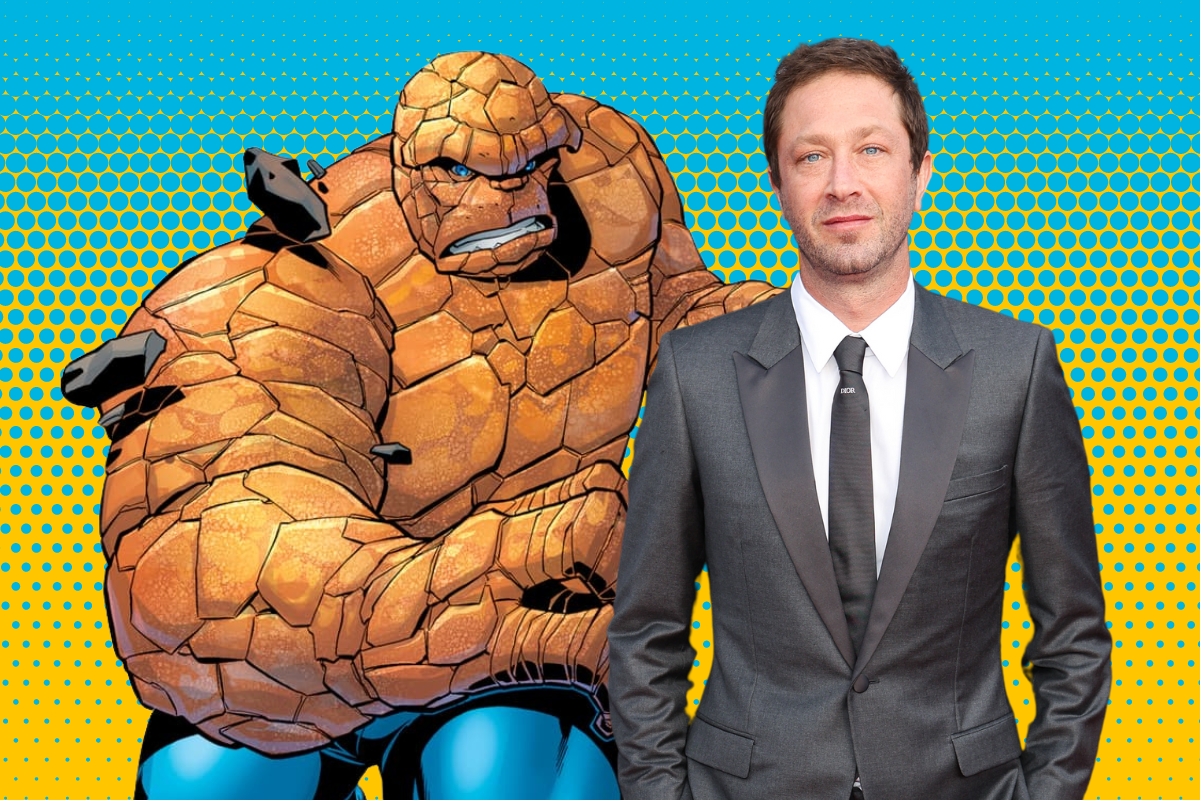Horror movie monster, comic book hero, a menace made of Play-Doh in “The Simpsons” — golems are everywhere when it comes to modern culture. We’ve seen many different portrayals of the Jewish mythical creature since the first recorded stories we have, dating back to the late 12th and 13th centuries. Since Marvel announced the casting of Jewish actor Ebon Moss-Bachrach in their upcoming “Fantastic Four” movie, now is the perfect time to compare the original pop culture golem story — the German silent film “Der Golem, wie er in die Welt kam” (translated as “The Golem: How He Came Into the World”) — with the newest Marvel depiction.
The first stories of the golem often depict it as a speechless servant, sometimes unaware of its own brute strength, similar to Boris Karloff’s later portrayal of Frankenstein’s monster. “Der Golem” follows this pattern. Directed by Paul Wegener and released in 1920 (1921 in the U.S.), the film was based on a 1915 novel written by Austrian writer Gustav Meyrink. Despite their adaptation of a Jewish folk tale, neither Meyrink nor Wegener were Jewish themselves.
“Der Golem” was part of a trilogy of golem films made by Wegener; the other two have become lost media. Later critics would credit many of the visuals associated with James Whale’s “Frankenstein” to have been inspired by the filmography of “Der Golem.” The film is set in a Jewish ghetto in medieval Prague, where a rabbi creates a golem in an attempt to protect his people from persecution by the Roman Empire. The rabbi and his assistant summon a devil named Astaroth to bring the golem to life. The golem is at first helpful; he saves the emperor’s court, which convinces the ruler to pardon the Jews. But strange astrological movements cause the golem to become hostile, as it breaks free of the Jewish ghetto and rampages throughout Prague leaving destruction in its wake. When the golem encounters a group of young children playing outside of the Jewish ghetto, one child takes the life-giving amulet off of the golem’s chest and it becomes inanimate once more. The Jewish community is glad that the threat of the golem has been defeated, and the film ends.
In this film, the golem is seen as less of a protector and more of a threat — a trend that would continue through later depictions of the golem as its story morphed and changed throughout history. The association with the demon Astaroth is new, lending a more sinister side to the legend. While the rabbi is involved in creating the golem, he has little to do with its defeat, as that is caused by a curious child from outside of the Jewish community. Arguably, “Der Golem” explicitly reduces the agency of the rabbi in this story in order to make a more traditional monster movie. I also think it’s important to note that the film’s rabbi associated with demons and devils in order to create the golem, a plot point that doesn’t appear in the original myth. Within its very first appearance in modern day popular culture, the story of the golem was already being molded and shaped to suit the creator’s needs.
Flashing forward to 1960s America, the Fantastic Four were created for Marvel Comics by Jack Kirby and Stan Lee, themselves both New York Jews. The first issue was released in 1961. Although the word “golem” isn’t used, Fantastic Four superhero Benjamin Grimm — also known as “The Thing” and presented as a hulking figure made out of stone — is clearly designed after the golem. Like the original golem, Grimm is a hero and protector — not just of the Jewish people, but of everyone. Grimm was not created out of clay and brought to life like the mythological golem; instead, his superhuman strength and rocklike skin came from exposure to strange radiation during space travel (the same radiation that gave the rest of the Fantastic Four their various superhuman abilities).
Grimm is written as a Jewish New Yorker born on the Lower East Side, a historically Jewish neighborhood at the time. Due to an early taboo in comics against revealing a character’s religion, Grimm was not explicitly mentioned to be Jewish until 2002, around four decades after his conception, when he recites the Shema over a dying childhood friend. But Kirby’s intent for Grimm to be Jewish was clear early on, most prominently in a 1976 Hanukkah card the artist drew for his family, where Grimm was featured celebrating the Festival of Lights. Kirby has also said in interviews that he based Grimm off of himself. In a 2006 story, Grimm celebrates his bar mitzvah 13 years after being transformed into the Thing.
This reimagining of the golem centers him as a hero and gives him more agency than previous tales — instead of merely being a servant, puppet or monster, Ben Grimm is a sentient human whose stonelike skin and superpowers come from comic book science rather than anything mystical. This adaptation may take more liberties than some other depictions of the golem in modern times, but it seems to me to be truest to the spirit of the original golem: a protector rather than a monster.



